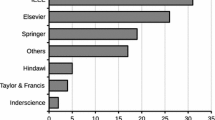Abstract
Based on evolutionary process optimization immune evolution algorithm, a multi-balloon cooperative control strategy is proposed, which targets at the problem that an artificial immune algorithm is apt to turn premature hastily when solving multi-objective problems. First, the control model of the multi-balloon robot is transformed into a multi-objective optimization problem, and an artificial immune algorithm is used to map and control, then Gaussian perturbation is added to the cloning behavior in the evolution process to ensure that there is a difference in each progeny after cloning. Weighting the most concentrated solution of the variation results, so that the scope of the solution is more diversified. Finally, the extinction mutations are performed on the extinct antibodies, which reduce the probability of antibody death and further maintains the diversity of the population. The simulation results show that compared with the standard support vector machine,the least squares support vector machine method and the standard artificial immune algorithm, the optimization result of the improved algorithm proposed in this paper is better in the solution of multi-objective optimization problem and the effect of the multi-balloon synergy control.

















Similar content being viewed by others
References
Kajita S, Cisneros R, Benallegue M, Sakaguchi T (2016) Impact acceleration of falling humanoid robot with an airbag. IEEE-RAS Int Conf Humanoid Robots 30:637–643
Wang JB, Fang YY, Tong X, Zhang S, Fei YQ (2018) Design and Locomotion properties of a multi-airbag bionic soft robot. J Shanghai Jiaotong Univ 52(1):20–25
Weitschat R, Vogel J, Lantermann S, Hoppner H (2017) End-effector airbags to accelerate human-robot collaboration. Proc IEEE Int Conf Robot Autom 11(8):2279–2284
Khosraviani M, Jahanshahi M, Farahani M, Bidaki ARZ (2018) Load–frequency control using multi-objective genetic algorithm and hybrid sliding mode control-based SMES. Int J Fuzzy Syst 20(1):280–294
Boukadida W, Benamor A, Messaoud H (2019) Multi-objective design of optimal sliding mode control for trajectory tracking of SCARA robot based on genetic algorithm. J Dyn Syst Meas Control 141(3):2887–2895
Singh K, Singh K, Son LH, Aziz A (2018) Congestion control in wireless sensor networks by hybrid multi-objective optimization algorithm. Comput Netw 138:90–107
Yegireddy NK, Panda S, Papinaidu T, Yadav KPK (2018) Multi-objective non dominated sorting genetic algorithm-II optimized PID controller for automatic voltage regulator systems. J Intell Fuzzy Syst 35(5):4971–4975
Araújo RDB, Coelho AAR (2017) Filtered predictive control design using multi-objective optimization based on genetic algorithm for handling offset in chemical processes. Chem Eng Res Des 117:265–273
Tavana M, Li ZJ, Mobin M (2016) Multi-objective control chart design optimization using NSGA-III and MOPSO enhanced with DEA and TOPSIS. Expert Syst Appl 50:17–39
Yoon J, Lee J (2017) Altitude and roll control of a hovering quad-rotor air vehicle using the multi-objective approximate optimization of proportional–integral–differential control. Eng Optim 49(10):1704–1718
Liu Y, Dong HB, Lohse N, Petrovic S (2016) A multi-objective genetic algorithm for optimization of energy consumption and shop floor production performance. Int J Prod Econ 179:259–272
Saad A, Khan SA, Mahmood A (2018) A multi-objective evolutionary artificial bee colony algorithm for optimizing network topology design. Swarm Evolut Comput 38:187–201
Ramirez AC, Del SJ, Camacho D (2019) Weighted strategies to guide a multi-objective evolutionary algorithm for multi-UAV mission planning. Swarm Evolut Comput 44:480–495
Liang ZP, Wang XY, Lin QZ, Chen F, Chen JY (2018) A novel multi-objective co-evolutionary algorithm based on decomposition approach. Appl Soft Comput J 73:50–66
Madiouni R, Bouallègue S, Haggège J, Siarry P (2016) Robust RST control design based on multi-objective particle swarm optimization approach. Int J Control Autom Syst 14(6):1607–1617
Hu FJ, Tu C (2017) An optimization model for target tracking of mobile sensor network based on motion state prediction in emerging sensor networks. J Intell Fuzzy Syst 32(5):3509–3524
Trivedi V, Prakash S, Ramteke M (2017) Optimized on-line control of MMA polymerization using fast multi-objective DE. Mater Manuf Process 32(10):1144–1151
Wang ZJ, Xu XF (2012) A sharing-oriented service selection and scheduling approach for the optimization of resource utilization. SOCA 6(1):15–32
Hu FJ, Lin JW, Gu HJ (2019) Dynamic linear predictive optimization of flexible robot profiling MFA model. J Sens 2019:1–9
Zamani AA, Tavakoli S, Etedali S (2017) Fractional order PID control design for semi-active control of smart base-isolated structures: a multi-objective cuckoo search approach. ISA Trans 67:222–232
Hu FJ, Wu G (2020) Distributed error correction of EKF algorithm in multi-sensor fusion localization model. IEEE Access 8:93211–93218. https://doi.org/10.1109/ACCESS.2020.2995170
Acknowledgements
This work was supported by the National Natural Science Foundation of China (Grant Nos. 51675490, 81 911530751), the Natural Science Foundation of Zhejiang Province (Grant Nos. LGG20F020015, LGG18F010007), and Young Academic Team Project of Zhejiang Shuren University.
Author information
Authors and Affiliations
Corresponding author
Additional information
Publisher's Note
Springer Nature remains neutral with regard to jurisdictional claims in published maps and institutional affiliations.
Rights and permissions
About this article
Cite this article
Hu, F., Lv, H. & Tuzikov, A.V. Multi-objective cooperative control based on evolutionary process optimization of immune algorithm. SOCA 14, 153–160 (2020). https://doi.org/10.1007/s11761-020-00295-w
Received:
Revised:
Accepted:
Published:
Issue Date:
DOI: https://doi.org/10.1007/s11761-020-00295-w




